
Lifting and material handling equipment company Terex (NYSE: TEX) missed Wall Street’s revenue expectations in Q1 CY2025, with sales falling 4.9% year on year to $1.23 billion. On the other hand, the company’s full-year revenue guidance of $5.4 billion at the midpoint came in 2.2% above analysts’ estimates. Its GAAP profit of $0.31 per share was 29.7% below analysts’ consensus estimates.
Is now the time to buy Terex? Find out by accessing our full research report, it’s free.
Terex (TEX) Q1 CY2025 Highlights:
- Revenue: $1.23 billion vs analyst estimates of $1.25 billion (4.9% year-on-year decline, 1.3% miss)
- EPS (GAAP): $0.31 vs analyst expectations of $0.44 (29.7% miss)
- Adjusted EBITDA: $128 million vs analyst estimates of $110.4 million (10.4% margin, 15.9% beat)
- The company reconfirmed its revenue guidance for the full year of $5.4 billion at the midpoint
- EPS (GAAP) guidance for the full year is $4.90 at the midpoint, beating analyst estimates by 15.8%
- EBITDA guidance for the full year is $660 million at the midpoint, above analyst estimates of $628.7 million
- Operating Margin: 5.6%, down from 12.2% in the same quarter last year
- Free Cash Flow was -$57 million compared to -$68.9 million in the same quarter last year
- Market Capitalization: $2.41 billion
Company Overview
With humble beginnings as a dump truck company, Terex (NYSE: TEX) today manufactures lifting and material handling equipment designed to move and hoist heavy goods and materials.
Sales Growth
A company’s long-term performance is an indicator of its overall quality. Any business can put up a good quarter or two, but the best consistently grow over the long haul. Regrettably, Terex’s sales grew at a tepid 4.6% compounded annual growth rate over the last five years. This fell short of our benchmark for the industrials sector and is a poor baseline for our analysis.
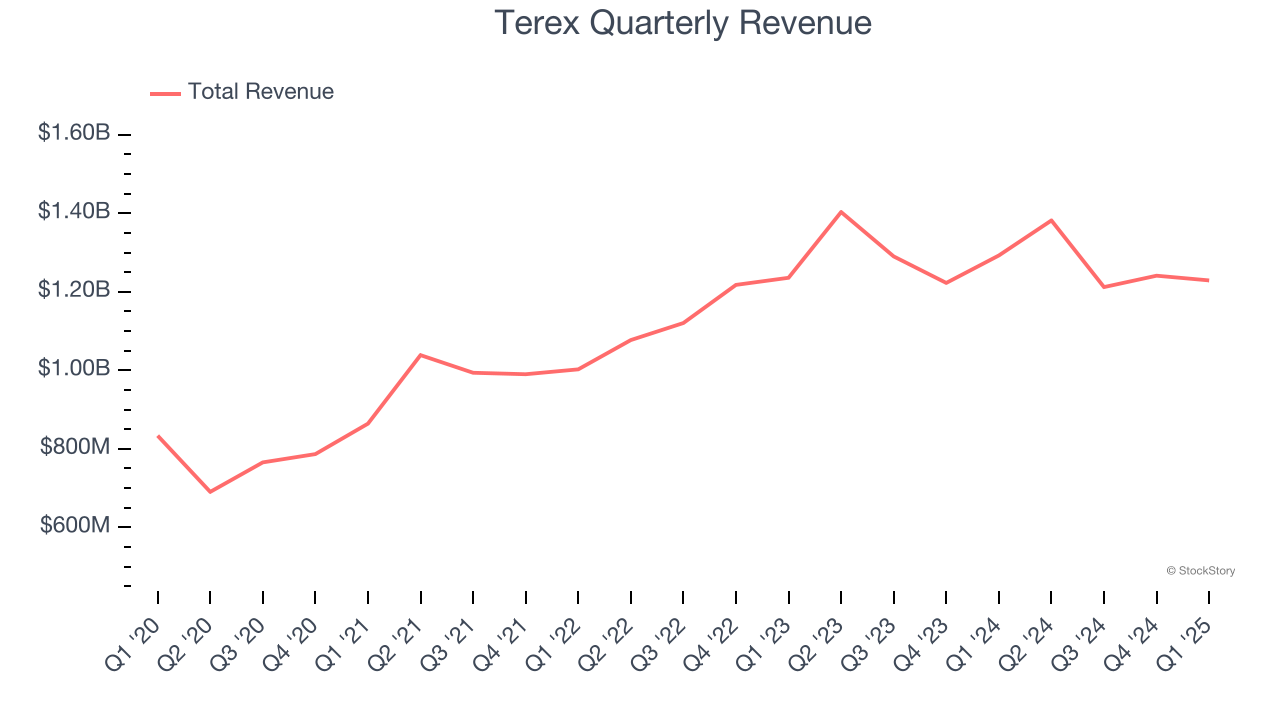
We at StockStory place the most emphasis on long-term growth, but within industrials, a half-decade historical view may miss cycles, industry trends, or a company capitalizing on catalysts such as a new contract win or a successful product line. Terex’s annualized revenue growth of 4.3% over the last two years aligns with its five-year trend, suggesting its demand was consistently weak. 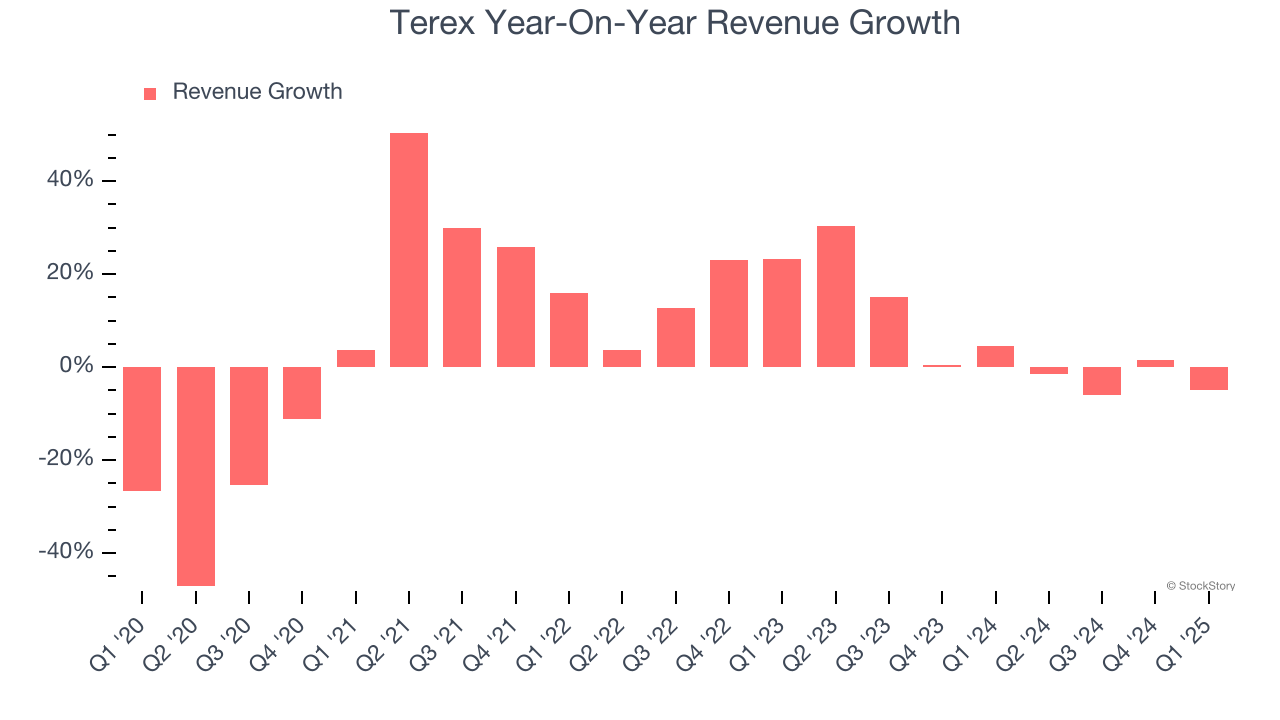
This quarter, Terex missed Wall Street’s estimates and reported a rather uninspiring 4.9% year-on-year revenue decline, generating $1.23 billion of revenue.
Looking ahead, sell-side analysts expect revenue to grow 6% over the next 12 months. Although this projection indicates its newer products and services will catalyze better top-line performance, it is still below the sector average.
Here at StockStory, we certainly understand the potential of thematic investing. Diverse winners from Microsoft (MSFT) to Alphabet (GOOG), Coca-Cola (KO) to Monster Beverage (MNST) could all have been identified as promising growth stories with a megatrend driving the growth. So, in that spirit, we’ve identified a relatively under-the-radar profitable growth stock benefiting from the rise of AI, available to you FREE via this link.
Operating Margin
Terex has done a decent job managing its cost base over the last five years. The company has produced an average operating margin of 9.3%, higher than the broader industrials sector.
Looking at the trend in its profitability, Terex’s operating margin rose by 4.2 percentage points over the last five years, as its sales growth gave it operating leverage.
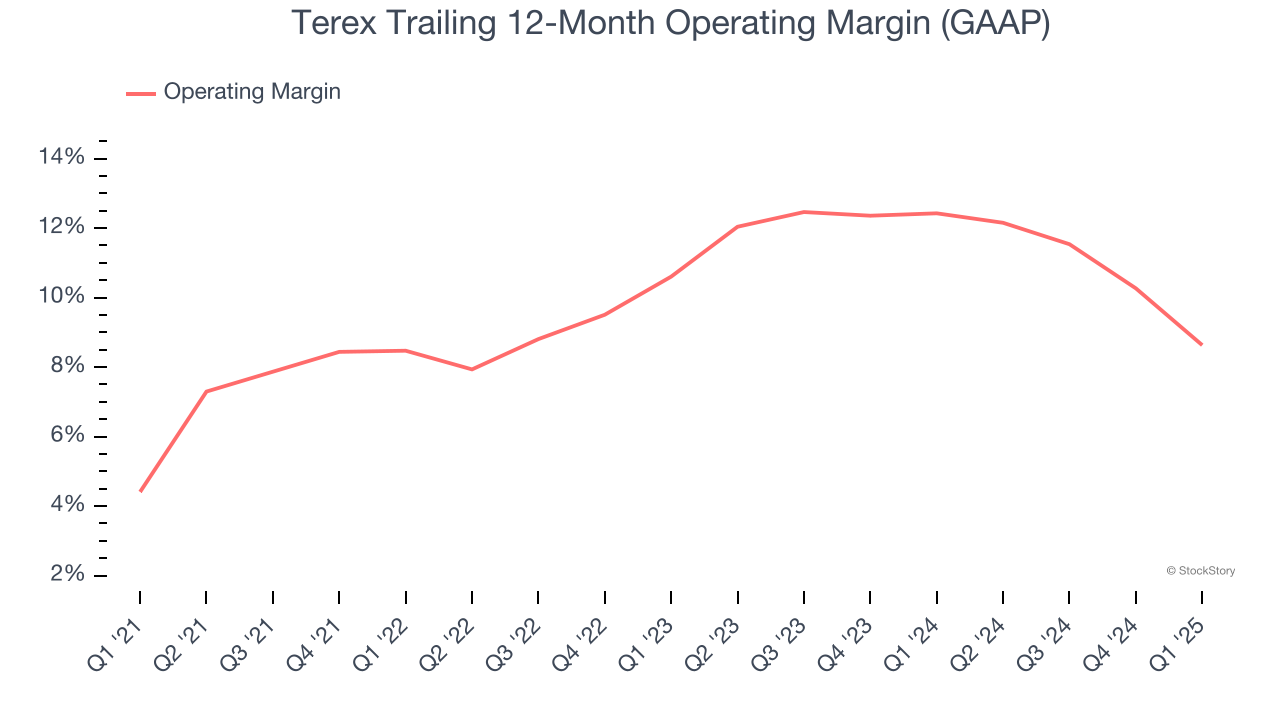
This quarter, Terex generated an operating profit margin of 5.6%, down 6.6 percentage points year on year. Since Terex’s operating margin decreased more than its gross margin, we can assume it was less efficient because expenses such as marketing, R&D, and administrative overhead increased.
Earnings Per Share
Revenue trends explain a company’s historical growth, but the long-term change in earnings per share (EPS) points to the profitability of that growth – for example, a company could inflate its sales through excessive spending on advertising and promotions.
Terex’s EPS grew at an astounding 24% compounded annual growth rate over the last five years, higher than its 4.6% annualized revenue growth. This tells us the company became more profitable on a per-share basis as it expanded.
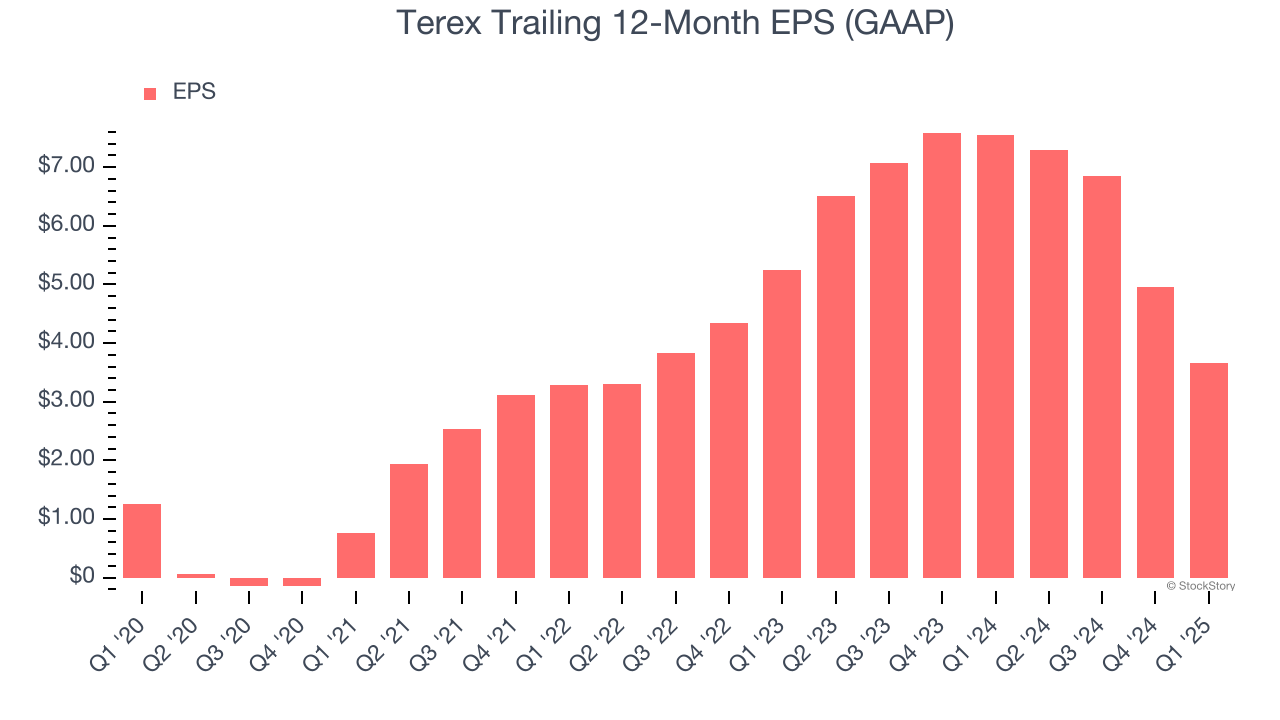
We can take a deeper look into Terex’s earnings to better understand the drivers of its performance. As we mentioned earlier, Terex’s operating margin declined this quarter but expanded by 4.2 percentage points over the last five years. Its share count also shrank by 5.1%, and these factors together are positive signs for shareholders because improving profitability and share buybacks turbocharge EPS growth relative to revenue growth. 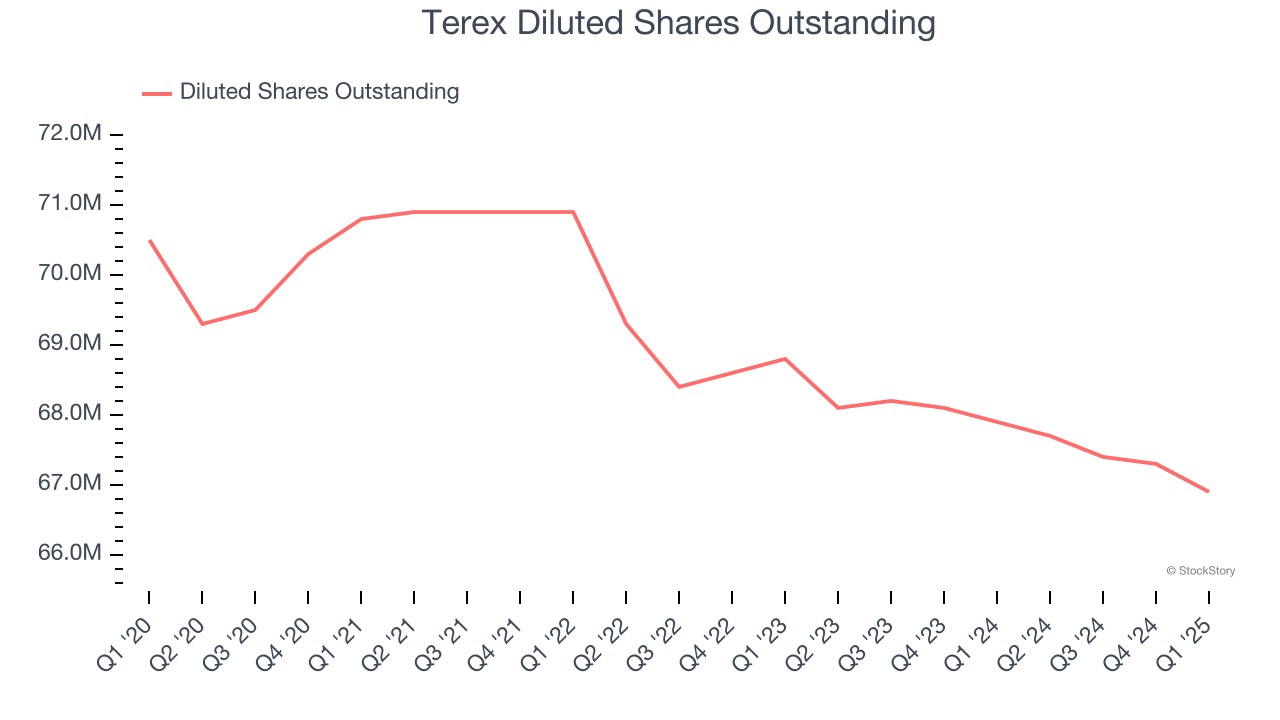
Like with revenue, we analyze EPS over a shorter period to see if we are missing a change in the business.
For Terex, its two-year annual EPS declines of 16.4% mark a reversal from its (seemingly) healthy five-year trend. We hope Terex can return to earnings growth in the future.
In Q1, Terex reported EPS at $0.31, down from $1.60 in the same quarter last year. This print missed analysts’ estimates, but we care more about long-term EPS growth than short-term movements. Over the next 12 months, Wall Street expects Terex’s full-year EPS of $3.67 to grow 22.5%.
Key Takeaways from Terex’s Q1 Results
We were impressed by how significantly Terex blew past analysts’ EBITDA expectations this quarter. We were also glad its full-year EBITDA guidance trumped Wall Street’s estimates. On the other hand, its revenue fell slightly short of Wall Street’s estimates. Overall, this print was mixed but still had some key positives. The stock traded up 5.8% to $38.45 immediately after reporting.
Indeed, Terex had a rock-solid quarterly earnings result, but is this stock a good investment here? If you’re making that decision, you should consider the bigger picture of valuation, business qualities, as well as the latest earnings. We cover that in our actionable full research report which you can read here, it’s free.


